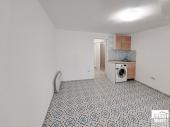|
| Bulgarian Easter |
|
|
 Easter is a Christian holiday commemorating the resurrection of Jesus Christ from the dead three days after his crucifixion on Good Friday. Easter also marks the end of the Lent. A symbol of the Resurrection is the egg out of which a bird hatches.
Easter is a Christian holiday commemorating the resurrection of Jesus Christ from the dead three days after his crucifixion on Good Friday. Easter also marks the end of the Lent. A symbol of the Resurrection is the egg out of which a bird hatches.
Easter is the time of springtime festivals, a time to welcome back the tulips, the crocuses and the daffodils. It is also the holiest day in the Christian calendar (followed by Christmas) and is recognized as a legal holiday in most countries with a significant Christian tradition.
The Bulgarian Easter traditions are a variation of traditional Orthodox Easter traditions. Here in Bulgaria, egg cracking is good for more than just eating the egg. The bright red colored egg is the symbol of Easter for the Orthodox Christians all over the world. The traditional Orthodox Paschal greeting is: "Christ has risen!" The answer is: "Indeed He has risen". This is the greeting during 40 days after Pascha. Also, the greeting is exchanged during the ritual tapping of the eggs which is explained below. The first egg is always painted red to symbolize the blood of Christ and should be put aside - either to be buried in the fields to ensure fertility or kept in the home to bring good luck. On Easter Sunday married couples traditionally visit the best man at their wedding and have roast lamb for lunch.
The Christian tradition of the red egg custom is connected with a specific legend. Mary Magdalene, whom Jesus had cured from all the evil spirits within her, was the first one to see Jesus rise from the dead and she went around the world to spread the happy news. She reached Rome and Emperor Tiberius’s palace. According to the tradition, everyone visiting him was supposed to carry a gift to the Emperor. The rich people were carrying expensive gifts while the poor ones offered whatever they could afford. Mary Magdalene took an egg to Tiberius’s palace and handed it to the Emperor with the following greeting:”Christ has risen from the dead!” The Emperor could not believe what he heard and responded: “How could anyone ever rise from the dead?! It is as impossible as that white egg to turn red right now!” While Tiberius was talking, the egg in Mary Magdalene’s hands started changing its color until it finally became bright red. The Easter greeting ever since has remained “Christ has risen from the dead” and Christians all over the world color eggs in red (and various other colors) for Easter to celebrate their belief in the resurrection.
The bright red colored egg is the symbol of Easter for the Orthodox Christians all over the world. It is tradition that the eggs are colored on Holy Thursday after the Divine Liturgy. The eldest woman in the house has the privilege of dying the eggs.
The Easter breads are a worldwide Orthodox tradition as well. These are big or small and decorated. The bread is called "kolache" or "kozunak". One of these Easter breads may be specially decorated with one or more (but always an odd number) of the red-colored eggs. This bread is taken to church on Saturday evening. The church bells begin to ring just before midnight, calling Orthodox Christians to worship. At midnight, a special sequence of services takes place: Midnight Office, Rush Procession, Matins and Divine Liturgy. These are the services of Great and Holy Pascha (Velikden). Following the service, the clergy blesses the breads and eggs brought by the people and they return with them to their homes. The eggs are cracked after the midnight service and during the next days. One egg is cracked on the wall of the church, and this is the first egg eaten after the long Great Fast. The ritual of tapping the eggs takes place just before the Easter lunch begins. Each person will select his or her egg. Then the people in turn exchange the Easter greeting ("Christ has risen!" / "Indeed He has Risen") 3 times before tapping their egg against the eggs of others.
The person who ends up with the last unbroken egg is believed to have a year of good luck. |
| Thursday, Apr 21, 2016 |
|
|
|
|
| » RENTALS |

|
|
|
| Apartment |
€ 200 |
|
| Location: |
Veliko Tarnovo |
|
|

|